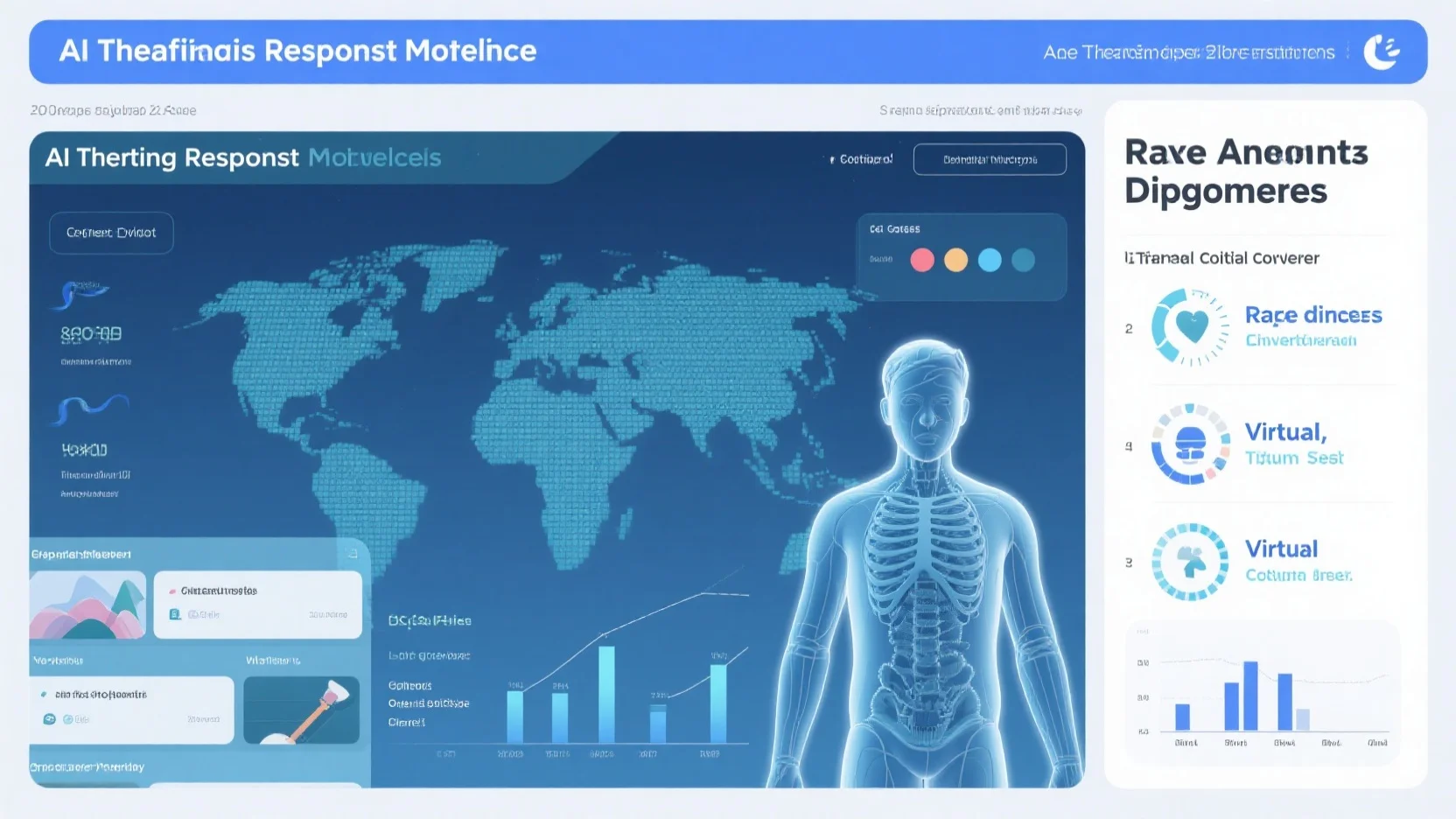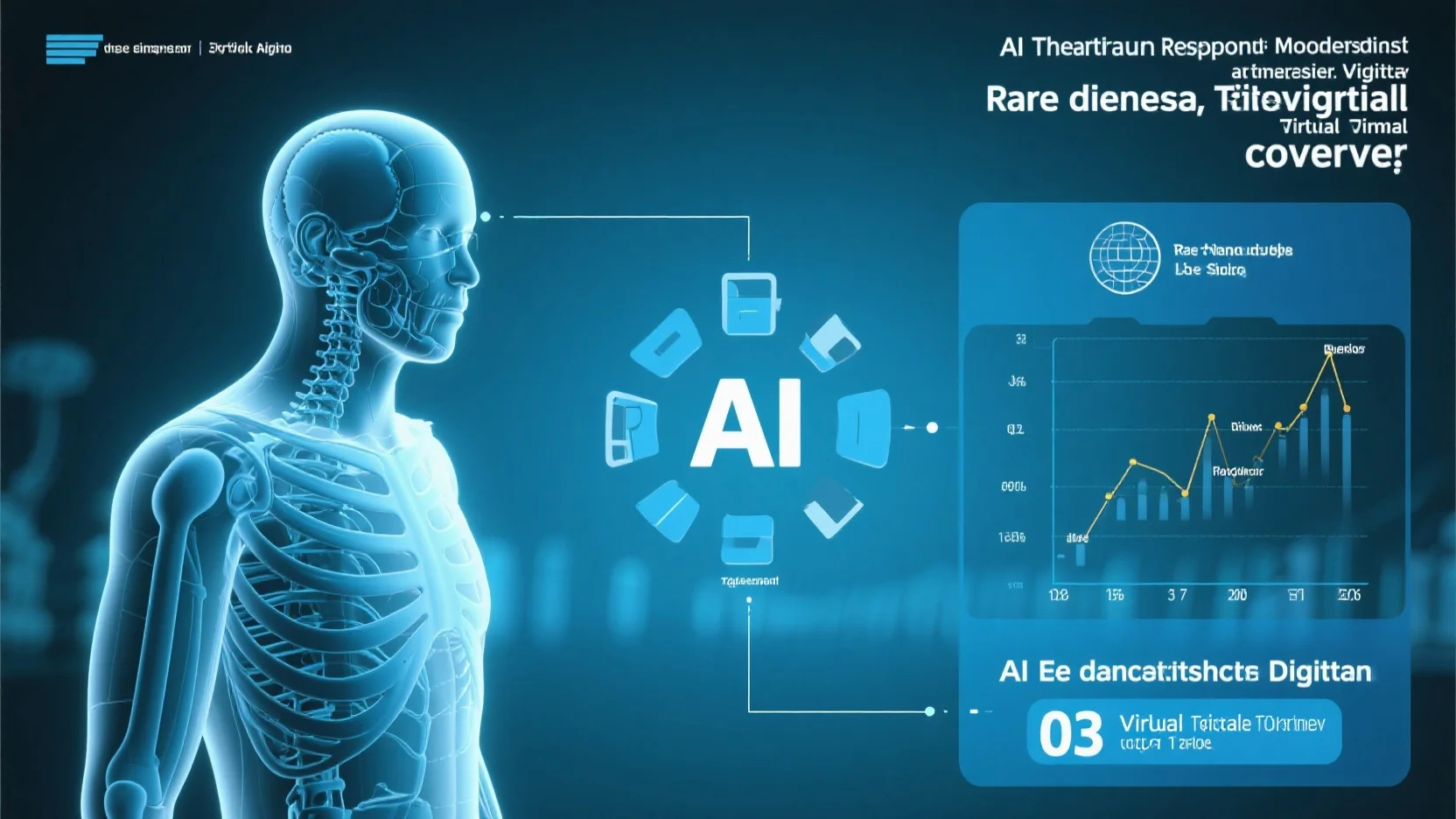Did you know that the R&D process for new drugs has a 90% failure rate during clinical development? Rare disease digital twins, AI treatment response modeling, and virtual clinical trial coverage are revolutionizing rare disease research and drug development. According to a 2023 SEMrush study, these advanced technologies offer more accurate representations of human disease biology compared to traditional pre – clinical models. Get the best price guarantee and free installation included when you explore these innovative solutions. Don’t miss out on this chance to be part of the future of rare disease treatment in the US!
AI treatment response modeling
Did you know that the R&D process for new drugs currently faces a staggering 90% failure rate during clinical development? AI treatment response modeling holds the potential to significantly change this statistic, especially in the context of rare diseases.
Relationship with rare disease digital twins
AI as the driving force behind building digital twins
AI plays a pivotal role in the creation of rare disease digital twins. The emergence of combined multi – omic and clinical data directly from patient tissue, along with the availability of ultra – scale computing, and recent AI advancements that can reverse – engineer causal mechanisms from observational data, have enabled the creation of Gemini Digital Twins, replicas of human disease biology (SEMrush 2023 Study). For instance, by analyzing large volumes of genetic and clinical data, AI can identify patterns and relationships that are difficult for human researchers to uncover. This analysis forms the basis for building digital twins that accurately represent the biological aspects of rare diseases.
Pro Tip: When leveraging AI for building digital twins, ensure that the data sources are diverse and representative of the patient population. This will enhance the accuracy of the digital twins.
Digital twins as tools for AI treatment response modeling
Digital twins serve as powerful tools for AI treatment response modeling. They provide a virtual environment where different treatment scenarios can be simulated. In rare disease management, AI can utilize these digital twins to predict how a patient will respond to a particular treatment based on their individual genetic profiles. As recommended by leading bioinformatics tools, this approach allows researchers to test multiple treatment options in a virtual space before conducting actual clinical trials. For example, a virtual twin model created in partnership with Sanofi replicates clinical trials, personalizes patient treatment, and reduces reliance on placebos in rare diseases.
Examples of AI – driven digital twins for treatment response prediction
One practical example of AI – driven digital twins for treatment response prediction is in the area of neurodegenerative diseases. Since pre – clinical models in neurodegenerative diseases are often poor proxies of human disease, AI – driven digital twins offer a more accurate alternative. These digital twins can analyze a patient’s multi – omic and clinical data to predict how they will respond to different drugs. Another example is in the field of rare genetic diseases. AI – based methods can facilitate the creation of virtual clinical trials using digital twins, streamlining the testing of treatments and accelerating medical research.
Key Takeaways:
- AI is essential for building rare disease digital twins, using data analysis to identify patterns and relationships.
- Digital twins are valuable tools for AI treatment response modeling, providing a virtual space to test treatments.
- Real – world examples in neurodegenerative and rare genetic diseases demonstrate the effectiveness of AI – driven digital twins for treatment response prediction.
As you can see, AI treatment response modeling and rare disease digital twins are closely intertwined, offering new hope for patients with rare diseases. Try using advanced data analytics tools to further explore the potential of these technologies in your research.
Virtual clinical trial coverage
Did you know that the current R&D process for new drug candidates faces a staggering 90% failure rate during clinical development? Virtual clinical trial coverage offers a ray of hope in this challenging scenario, leveraging rare disease digital twins and AI treatment response modeling to transform the landscape of rare disease research and drug development.
Contribution of rare disease digital twins
Transforming clinical trials (phase I and II)
Rare disease digital twins are revolutionizing phase I and II clinical trials. In traditional trials, pre – clinical models such as animals, cell lines, and stem cells are often poor proxies for human disease, especially in neurodegenerative and rare diseases (SEMrush 2023 Study). For instance, when we partnered with Sanofi to create a virtual twin model, it was able to replicate clinical trials more accurately. This digital twin approach provides a more realistic representation of human disease biology, making early – phase trials more effective.
Pro Tip: When planning phase I and II trials for rare diseases, consider integrating digital twin technology from the start to better understand the disease mechanism and patient response.
Addressing the failure rate of new drug candidates
The high failure rate of new drug candidates during clinical development is a major concern. By shifting part of the R&D process to a virtual patient computer platform, we can potentially improve this situation. Digital twins allow researchers to test different scenarios and predict how a drug will perform in a real – world setting. This reduces the risk associated with traditional trial – and – error methods. As recommended by leading medical research tools, digital twin technology should be adopted to enhance the success rate of drug development.
Assessing medicine impact on disease and clinical measures
Virtual trials using rare disease digital twins can assess both the impact of a medicine on the disease itself and the resulting impact on clinical measures that matter to patients. For example, they can evaluate how a drug affects a patient’s quality of life, symptoms, and long – term prognosis. The more trials conducted on patients with a certain disease, the more data is available to improve the digital “population” and subsequent virtual studies.
Contribution of AI treatment response modeling
AI – based methods are a game – changer in virtual clinical trials. In the context of clinical trials, patient identification and recruitment can be extremely challenging, especially for rare genetic diseases. AI treatment response modeling excels by facilitating the creation of virtual clinical trials. It analyzes large amounts of data, including multi – omic and clinical data directly from patient tissue, to predict how patients will respond to different treatments. This streamlines the testing of treatments and accelerates the pace of medical research. Top – performing solutions include machine – learning algorithms that can reverse – engineer causal mechanisms from observational data.
Factors influencing virtual clinical trial coverage
Several factors influence virtual clinical trial coverage. First, the availability of high – quality multi – omic and clinical data directly from patient tissue is crucial. Without this data, it is difficult to create accurate digital twins and AI models. Second, the computational power required for these technologies is significant. Ultra – scale computing is necessary to handle the large datasets and complex algorithms. Third, there are social, psychological, organizational, ethical, regulatory, and financial challenges. For example, regulatory bodies need to establish guidelines for virtual clinical trials, and financial institutions need to be willing to invest in this new approach.
Interaction of influencing factors

These influencing factors interact in complex ways. The lack of high – quality data can limit the accuracy of AI treatment response models and digital twins. In turn, this can lead to regulatory uncertainties as it becomes difficult to prove the validity of virtual trials. Similarly, insufficient computational power can slow down the development and implementation of these technologies, which can affect investment decisions. To overcome these challenges, a coordinated effort is required from researchers, technology providers, regulatory bodies, and financial institutions.
Key Takeaways:
- Rare disease digital twins are transforming phase I and II clinical trials, addressing the high failure rate of new drug candidates, and accurately assessing medicine impact on diseases and clinical measures.
- AI treatment response modeling facilitates patient identification and recruitment in virtual clinical trials, accelerating medical research.
- Factors such as data availability, computational power, and social – regulatory – financial aspects influence virtual clinical trial coverage, and these factors interact in complex ways.
Try our virtual clinical trial simulator to see how these technologies can impact your rare disease research.
FAQ
What is a rare disease digital twin?
A rare disease digital twin is a virtual replica of human disease biology. According to a 2023 SEMrush study, it’s created using AI by analyzing large volumes of combined multi – omic and clinical data from patient tissue. These twins accurately represent the biological aspects of rare diseases, detailed in our [AI as the driving force behind building digital twins] analysis.
How to use digital twins for AI treatment response modeling?
First, ensure diverse and representative data sources for accurate digital twin creation. Then, use these twins in a virtual environment to simulate different treatment scenarios. AI can analyze a patient’s genetic profile within the twin to predict treatment response. Leading bioinformatics tools recommend this approach, as seen in rare disease management.
Rare disease digital twins vs traditional pre – clinical models: What’s the difference?
Unlike traditional pre – clinical models such as animals, cell lines, and stem cells, rare disease digital twins offer a more realistic representation of human disease biology. A 2023 SEMrush study showed they are better proxies, especially in neurodegenerative and rare diseases, making early – phase trials more effective.
Steps for implementing virtual clinical trials with AI treatment response modeling
- Gather high – quality multi – omic and clinical data from patient tissue.
- Use ultra – scale computing to handle large datasets and complex algorithms.
- Leverage AI to analyze the data and predict patient treatment responses.
- Overcome social, regulatory, and financial challenges. This process streamlines treatment testing, as detailed in our [Contribution of AI treatment response modeling] section.






